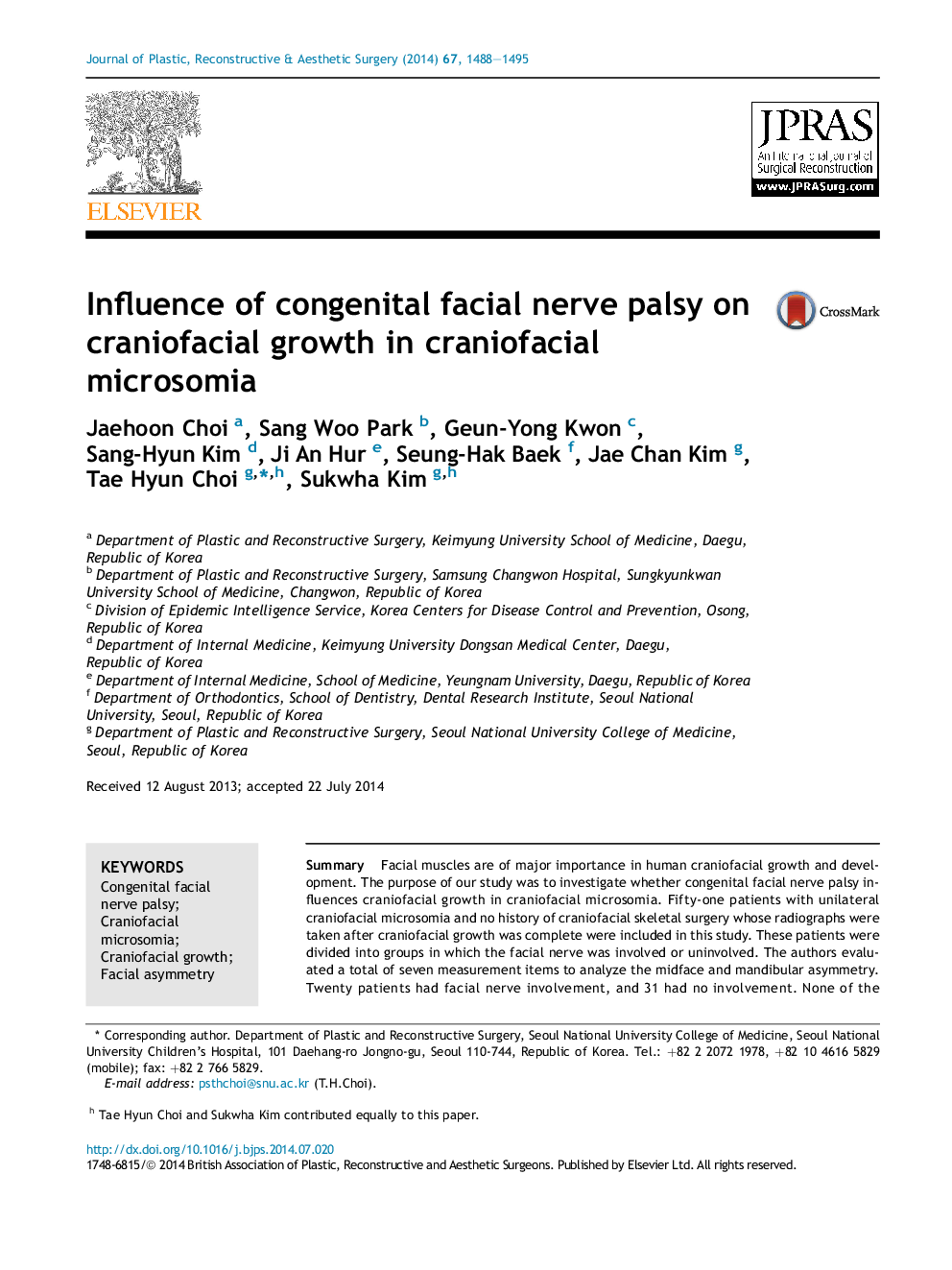| کد مقاله | کد نشریه | سال انتشار | مقاله انگلیسی | نسخه تمام متن |
|---|---|---|---|---|
| 4118529 | 1270334 | 2014 | 8 صفحه PDF | دانلود رایگان |
عنوان انگلیسی مقاله ISI
Influence of congenital facial nerve palsy on craniofacial growth in craniofacial microsomia
ترجمه فارسی عنوان
تأثیر فلج عصبی مادرزادی فیزیکی بر رشد قارونوی فاسیال در میکروسومای سرخوشی
دانلود مقاله + سفارش ترجمه
دانلود مقاله ISI انگلیسی
رایگان برای ایرانیان
کلمات کلیدی
فلج عصبی مادرزادی فیزیولوژی، میکروسومیا کریوفاسالی، رشد قارچی، عدم تقارن صورت،
موضوعات مرتبط
علوم پزشکی و سلامت
پزشکی و دندانپزشکی
بیماری های گوش و جراحی پلاستیک صورت
چکیده انگلیسی
Facial muscles are of major importance in human craniofacial growth and development. The purpose of our study was to investigate whether congenital facial nerve palsy influences craniofacial growth in craniofacial microsomia. Fifty-one patients with unilateral craniofacial microsomia and no history of craniofacial skeletal surgery whose radiographs were taken after craniofacial growth was complete were included in this study. These patients were divided into groups in which the facial nerve was involved or uninvolved. The authors evaluated a total of seven measurement items to analyze the midface and mandibular asymmetry. Twenty patients had facial nerve involvement, and 31 had no involvement. None of the measurement items revealed any significant differences between the facial nerve-involved group and the uninvolved group within the same modified Pruzansky grade. There was no correlation between the type of facial nerve involvement and the measurement items. In relationships among the measurement items within each group, maxillary asymmetry was indirectly correlated with mandibular asymmetry or midline deviation through the occlusal plane angle in the uninvolved groups. However, in the facial nerve-involved group, the relationships disappeared. When the correlations in the facial nerve-involved group were compared with those of the uninvolved group, the relationships in the uninvolved group appeared more significant than in the facial nerve-involved group. The loss of relationships between the upper and lower jaw in the facial nerve-involved group might have been caused by subtle changes, which occur in midfacial bones and in the mandible due to facial nerve palsy. The main limitation of our study is that aside from facial nerve palsy, craniofacial microsomia has many factors that can influence craniofacial growth, such as hypoplasia of the mandibular condyle and soft tissue deficiencies.
ناشر
Database: Elsevier - ScienceDirect (ساینس دایرکت)
Journal: Journal of Plastic, Reconstructive & Aesthetic Surgery - Volume 67, Issue 11, November 2014, Pages 1488-1495
Journal: Journal of Plastic, Reconstructive & Aesthetic Surgery - Volume 67, Issue 11, November 2014, Pages 1488-1495
نویسندگان
Jaehoon Choi, Sang Woo Park, Geun-Yong Kwon, Sang-Hyun Kim, Ji An Hur, Seung-Hak Baek, Jae Chan Kim, Tae Hyun Choi, Sukwha Kim,
